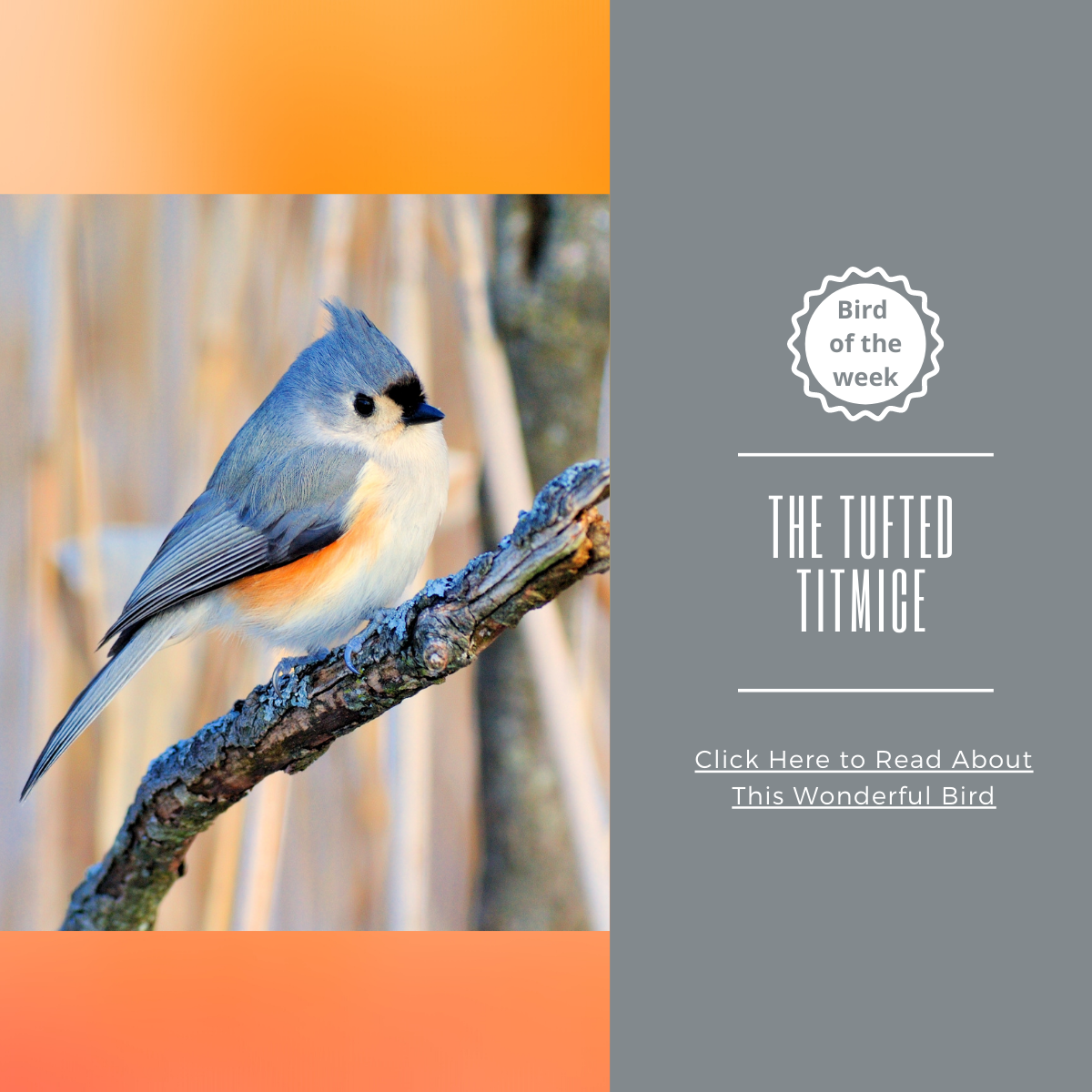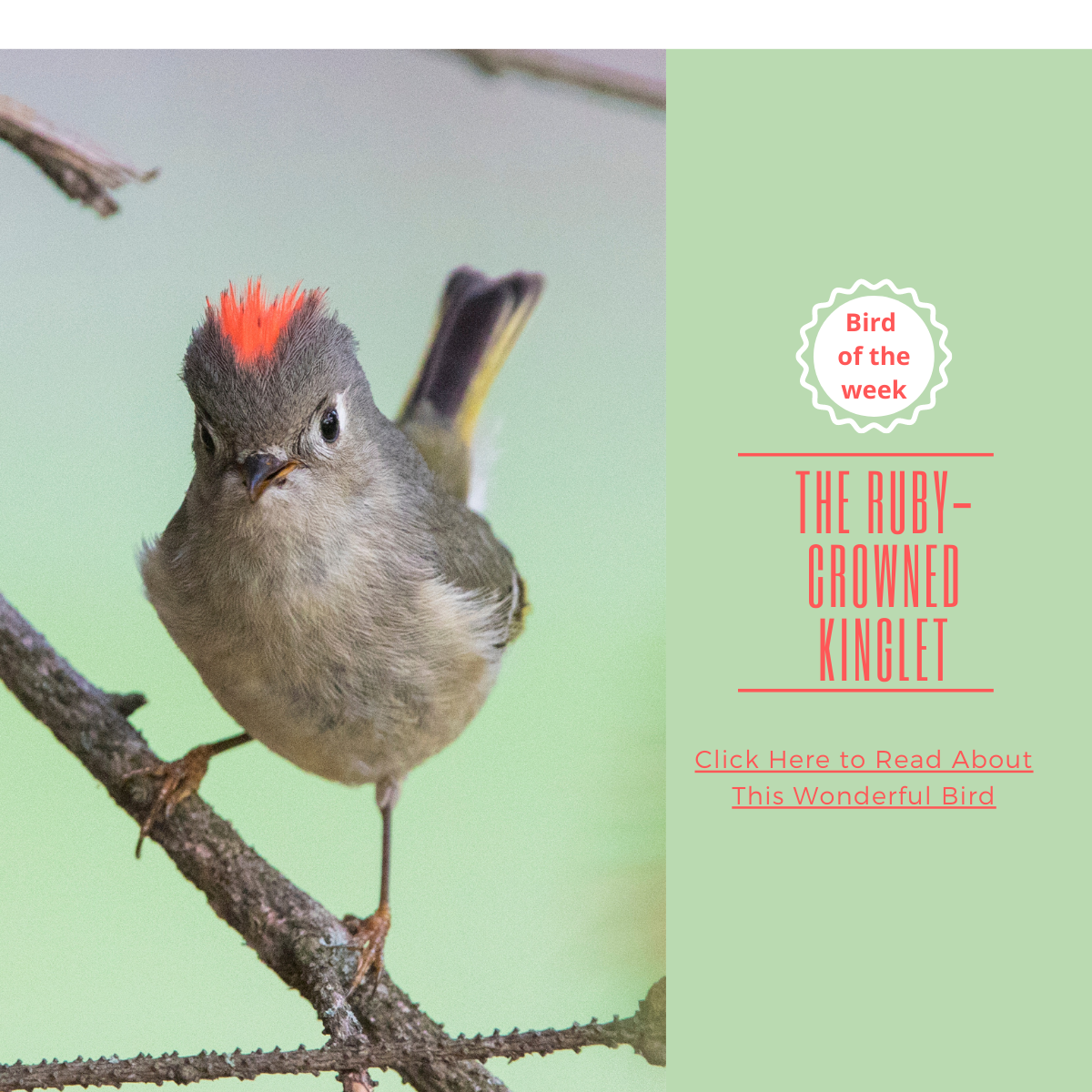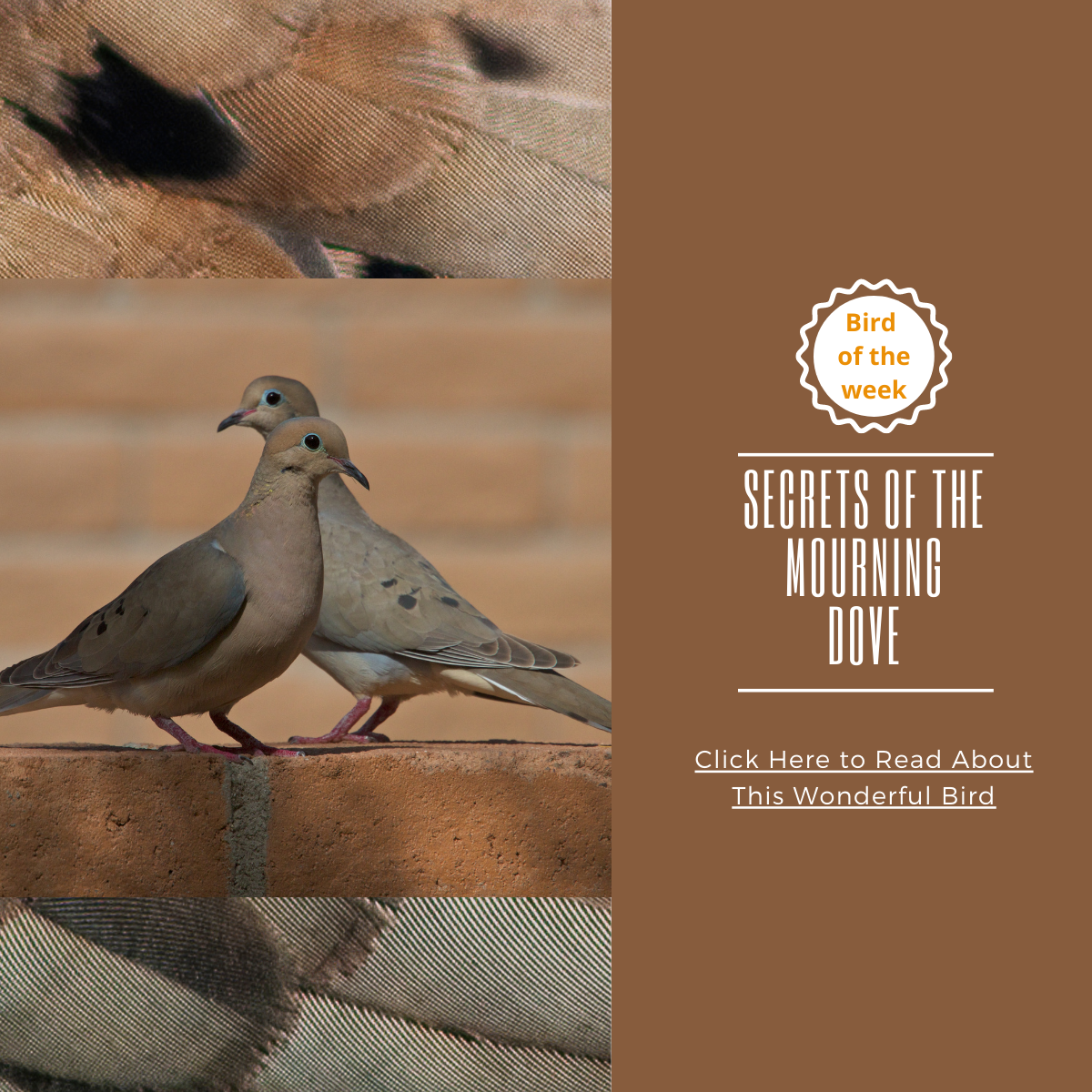FAMILY: Paridae

This little cutie comes to my bird feeder almost every day, pecking at the seeds and sometimes just staring through my window, as if checking to see if I’m making the coffee properly. If I could spend a bit more time with him, I could probably get him to feed out of my hand.
As this silver songbird always puts a smile on my face, I figured today will be his shining day to star in our Bird Of the Week! So please welcome our honored guest: The Tufted Titmouse.
Let's start with their name, who's root lies in two ancient Anglo-Saxon words — “tit,” from a word meaning something small, and “mouse,” from a word applied to any small bird, as well as that little rodent.
The Tufted Titmouse is a small songbird of the tit and chickadee family. They are about 5.5-6.3 inches long and weigh up to 1 oz.
Males and females have similar looks: a silver colored plumage, puffy white fronts, grey upper body outlines, rust-colored flanks, black foreheads and a grey crest, or shall we say, tuft, on their heads
Luckily for us, these lovely songbirds with their charming chirps are a common sight here in the deciduous forests of the northern US. Until recently, the Tufted Titmice were denizens of Ohio and Mississippi all year round as these are non-migratory birds. But due to bird feeders, yes, due to us, Tufted Titmice have spread up north all the way to Ontario, Canada!
The average lifespan of a Tufted-Titmouse is 2.1 years. However, the oldest “cowboy” lived until 13 years and 3 months in the wild. He was banded in Virginia in 1962 and found in the same state all those years later!
Most birds don't reach their maximum lifespan as many of them die as nestlings due to predation by birds of prey; mammals, such as raccoons, opossums, squirrels, skunks and domestic rats; and reptiles, including snakes.
In case you missed last week's bird-of-the-week: Ruby-crowned kinglet.
Which bird feeders do Tuft-Titmice prefer?
Tufted Titmice gather food from the ground and from tree branches, so the best feeders for them would be hopper feeders (house feeders), platform feeders and suet feeders.
Before the cold season starts, the Tufted Titmouse, thinking ahead, starts to “forage and storage”, like the chickadees. Tufted Titmice actually use your bird feeder as their pantry. They hoard most of the seeds they take and store them, taking one seed a trip, in their "storage units" about 130 feet away from the feeder.
Also, think about adding a birdbath to your garden. It will increase your chances of attracting a Tufted Titmouse.
What do Tufted Titmice eat?
Tufted Titmice are regulars at backyard bird feeders, especially in winter. Their main food preferences are black oil sunflower seeds (whole and seeded), safflower seeds, nyjer, suet, peanuts (whole or crushed) and mealworms, as well as berries and nuts. The bigger the seed, the better the chances to attract them.
Come summer, Tufted Titmice eat insects, mainly caterpillars, as well as beetles, ants and wasps, spiders and snails.
What does the Tufted Titmouse sound like?
The Tufted Titmouse’s song is usually described as a whistled “Peter Peter Peter” which they can repeat up to 11 times in succession or up to 35 songs per minute. They also have a scratchy little scolding voice, “neh-neh-neh,” which they use when disturbed by something. Females are known to sing a quieter the same tune in a quieter version.
A Tit-bit of love.
Most breeding occurs during the warm months of the year, usually March to May. Males bond with the females by feeding them. A way to a woman's heart - through her stomach.
As part of the courtship display, the males adopt poses that most favorably display their crests and orange flanks.
Unlike other types of Chickadees, Tufted Titmice don’t flock together. This is perhaps because they get aggressive toward each other - so they break into pairs to breed.
The pairs stay together during the winter, with the company of the young from previous clutches who help raise the next brood. The juveniles become a form of babysitters.
Tufted Titmice nests are cup-shaped, consisting of damp leaves, moss, grass and bark strips. They line this cup with soft materials such as fur, wool, cotton, shed snake skin… sometimes plucking hair from a live animal, such as a dog - or even a human!
Tufted Titmice raise 1-2 broods per season. Nest construction takes 6 to 11 days, after which the female will incubate for about 14 days. Her eggs (5-8 a brood) are cream-colored with brownish or purplish spots. The female does leave the nest to feed and bathe - but mostly the males bring food to her. After hatching, the young’uns leave the nest after about 18 days, but stay around to help raise the next brood.
Here's a Tufted-Titmouse flapping his wings in courtship:
FUN FACTS:
~Used section
Tufted Titmice can’t drill holes into trees to build their nests but use natural holes and cavities left by old nests drilled by woodpeckers, many of them Pileated Woodpeckers. So if you have dead wood lying around in your garden, leave it there. One person’s trash, another's treasure. It could be crucial for these little flyers' survival. You might also see them in artificial holes such as nesting boxes, fence-posts and metal pipes.
~Music foolery
Tufted Titmice have an alarm call that to most ears sounds as though it’s fading off into the distance, fooling the predator that the bird is moving from near at hand to far away.
~First responders
I love this one: If Tufted Titmice hear a cry for help, such as another bird being attacked, they will be the first to join the battle and help to fight the predator.
~When life gives you lemons
Tufted Titmice will eat snow when no drinking water is available.
~From the bottom up
They can eat upside down like chickadees, hanging from twigs and hornets’ nests
~Cutlery feet
Tufted Titmice are one of just a few perching birds that can hold seeds with their feet while breaking them open. They will usually grab a seed and fly to a high perch to work on opening the shell.




2 comments
Jeff Lawver
I live in rural southwest Wisconsin, and get the titmouse off and
on at my feeders. Some years I don’t see them at all, while others
I get them right up until I quit feeding in late spring. This year is rather
strange as three were coming daily for at least a month and a half.
Suddenly they stopped showing up. I haven’t seen them now for over
a week. I saw this happen one other year, but that year they didn’t quit
coming until early February, when I assumed they were setting up a nesting
territory. I’ve seen this behavior with chickadees as well, although they
never stop coming completely, like they’re larger cousin.
Erin
My favorite song bird! Thanks for the article ❤️
Leave a comment
All comments are moderated before being published.
This site is protected by hCaptcha and the hCaptcha Privacy Policy and Terms of Service apply.